Imagine walking into your grandmother's kitchen, where the smell of a 1920’s Recipe for Chocolate Cake fills the air—a vintage chocolate cake that captures the essence of the era. More than just a dessert, it embodies American strength and resilience during tough times.
In the 1920s, bakers worked magic with minimal ingredients, transforming simple staples into extraordinary dishes. Recreating a 1920’s Recipe for Chocolate Cake in your kitchen brings the spirit of the Roaring Twenties to life, where creativity and resourcefulness flourished.
This cake was more than a meal; it brought joy and comfort during hard times. Using basic ingredients like flour, cocoa, and eggs, bakers crafted something truly special.
Exploring these baking techniques with a 1920’s Recipe for Chocolate Cake transports you to the 1920s, sharing the era's stories of creativity, skill, and delicious ingenuity.
Table of contents
The Historical Significance of Depression Era Baking and the 1920’s Recipe for Chocolate Cake
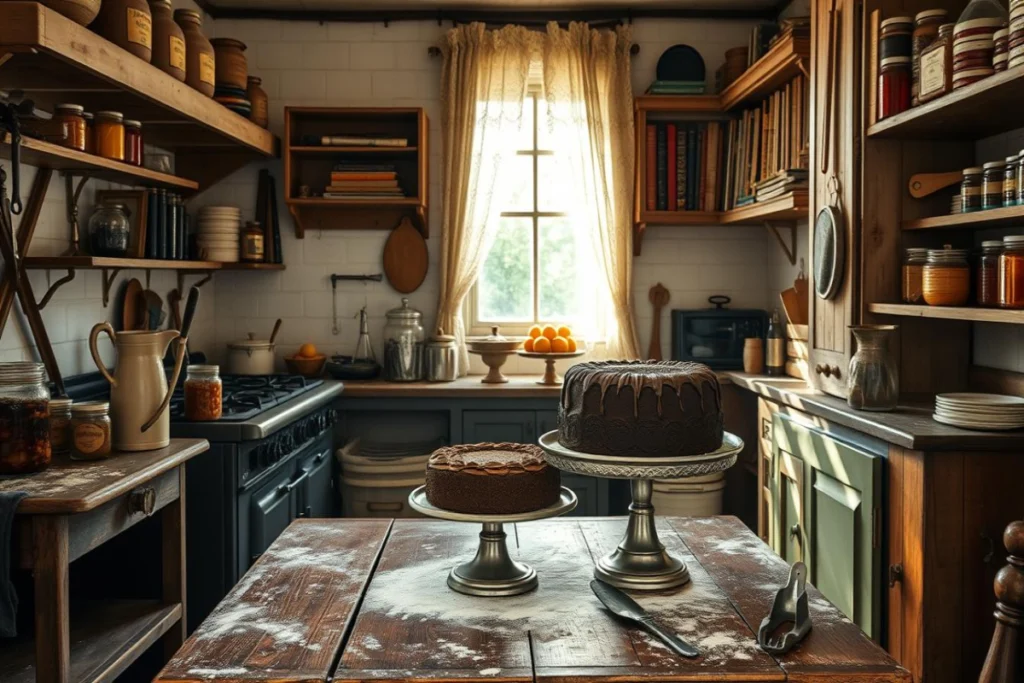
Depression era baking showed American strength during tough times. Home cooks made tasty treats from little, creating a lasting 1920’s baking tradition.
The historical chocolate cake recipe was more than a sweet treat. It was a symbol of hope and creativity in hard times.
Origins of Depression and War Cakes
During the Great Depression, bakers got creative with recipes. They used:
- Water instead of milk
- Vinegar as egg substitutes
- Vegetable oil instead of butter
"Necessity is the mother of invention" perfectly described the baking practices of this era.
How Chocolate Became Accessible
The industrial revolution made chocolate affordable. With packaged cocoa powder and mass production, families could enjoy chocolate desserts.
Impact on American Culinary Culture
Depression-era baking changed home cooking. These smart methods kept families fed and started lasting traditions, like banana bread, that still inspire today.
The creativity from hard times changed American baking. It showed that you can make great food with little.
Essential Vintage Ingredients and Their Modern Equivalents for a 1920’s Recipe for Chocolate Cake
Exploring 1920’s baking shows us a world of traditional chocolate cake ingredients. These ingredients tell a story of culinary richness. They were simple yet precise, showing the resourcefulness of home bakers during tough times.
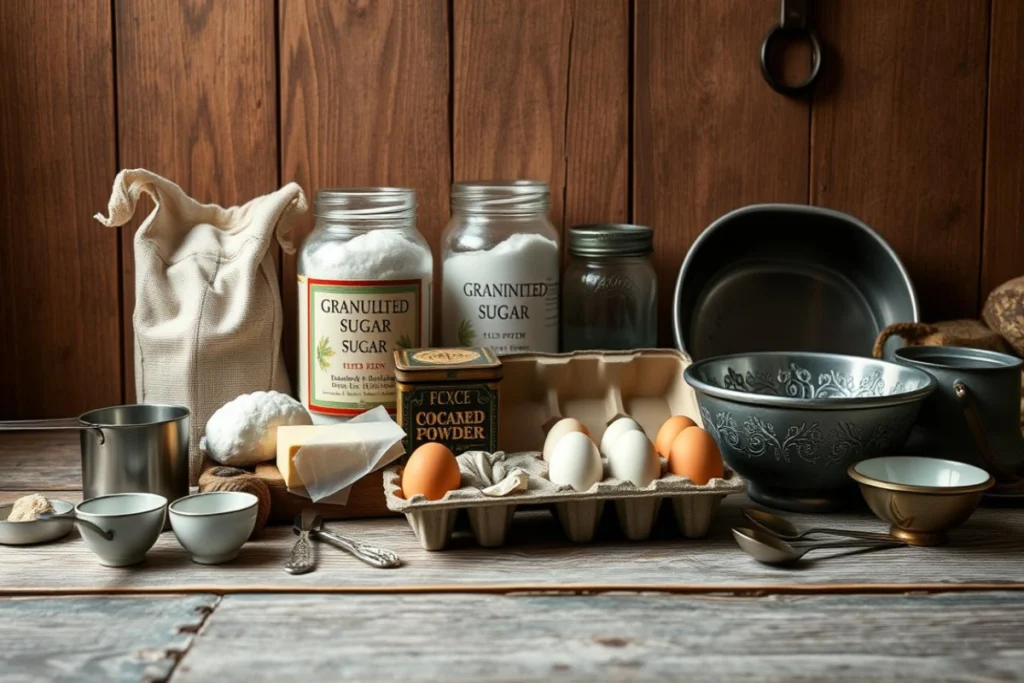
"Baking is an art that connects us to our culinary heritage, one ingredient at a time." - Vintage Baking Enthusiast
Starting your journey into 1920’s baking, you’ll find the core ingredients that made chocolate cakes special:
- All-purpose flour (unbleached preferred)
- Unsweetened cocoa powder
- Granulated sugar
- Fresh farm eggs
- Pure vanilla extract
The charm of vintage baking is in its precise measurements. Let’s look at the key ingredients and their modern versions:
| 1920’s Ingredient | Modern Equivalent | Typical Quantity |
|---|---|---|
| Buttermilk | Milk + Vinegar | 1 cup |
| Unsalted Butter | High-fat European-style butter | 1/2 cup |
| Baking Soda | Aluminum-free baking soda | 1 teaspoon |
When making these vintage recipes, remember that quality ingredients are key. Using fresh, local ingredients will bring out the true flavor of 1920’s chocolate cake. This will make your baking truly special.
Mastering the 1920’s Recipe for Chocolate Cake: A Nostalgic Treat
Exploring a classic dessert recipe from the 1920’s is a fun journey. The vintage chocolate cake recipe shows how home bakers were creative during tough times. These recipes share stories of family kitchens and simple joys.
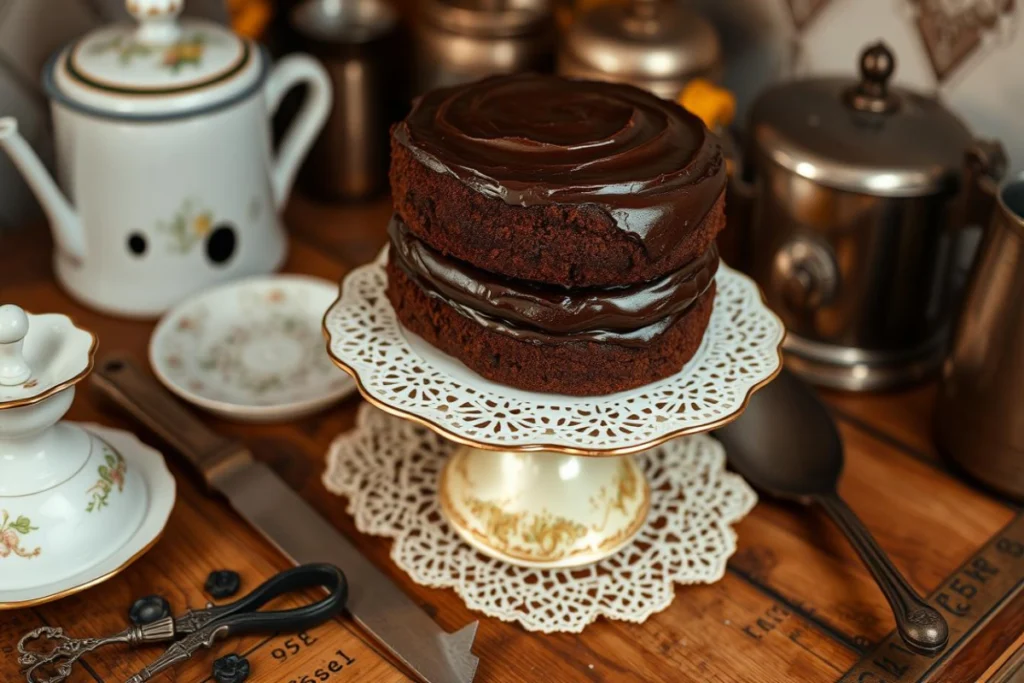
Traditional Mixing Methods
Your 1920’s recipe for chocolate cake begins with a special mixing method. Bakers used hand-cranked mixers and wooden spoons. They creamed ingredients carefully to achieve the right texture.
- Cream butter and sugar until light and fluffy
- Add eggs one at a time
- Alternate dry ingredients with buttermilk
- Use gentle mixing techniques to maintain cake’s tenderness
Original Measurements Guide
Vintage chocolate cake recipes use different measurements than today. Bakers used unique ways to measure ingredients, adding charm to their baking. Here’s a guide to authentic 1920’s measurements:
| Ingredient | Vintage Measurement | Modern Equivalent |
|---|---|---|
| Buttermilk | 1 cup | 1 cup milk + 1 tbsp vinegar |
| Butter | 1/2 cup | 1 stick (113g) |
| Sugar | 1-1/2 cups | 300g granulated sugar |
Proper Temperature Control
To make the perfect vintage chocolate cake, you need to control the temperature. Preheat your oven to 350°F (175°C). Use two 9-inch round pans. Bake for 25-30 minutes for a moist cake. The key is patience and attention to detail.
"Baking is love made visible" - A sentiment that captures the essence of 1920's home cooking
The Art of Hand-Mixing Techniques for the Perfect 1920’s Recipe for Chocolate Cake
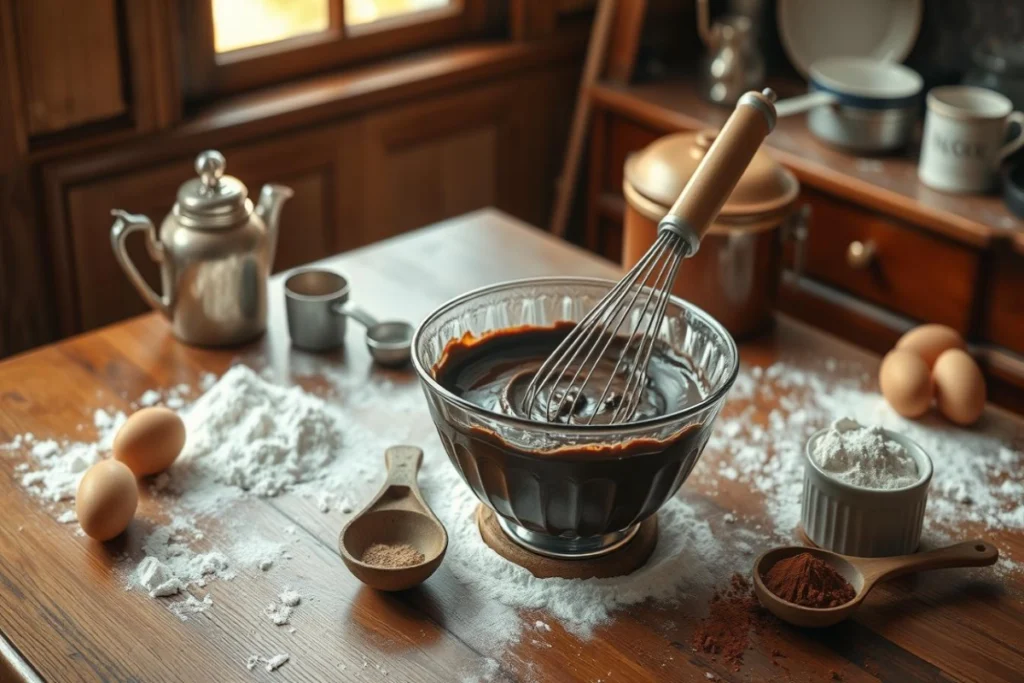
Retro cake making is all about mastering old-school hand-mixing. It turns simple ingredients into a tasty treat. Back in the 1920s, bakers used patience and skill to make cakes without electric mixers.
Start your hand-mixing adventure with the right tools. A strong wooden spoon is your main tool. It needs careful use and gentle strokes to mix the batter right.
- Use room temperature ingredients for smoother mixing
- Cream butter and sugar thoroughly by hand
- Add eggs one at a time, mixing gently
- Sift dry ingredients to prevent lumps
"The secret to a light cake lies not in power, but in the gentle touch of your hand." - Vintage Baking Wisdom
When mixing wet and dry ingredients, fold them together. Overmixing can make the cake dense and tough. You want to mix just enough to blend them well, keeping your cake light and fluffy.
Getting good at these old techniques takes practice and patience. Every stroke of your spoon connects you to a long tradition of baking. It’s a celebration of the art of making cakes.
Understanding Vintage Baking Equipment for Crafting a 1920’s Recipe for Chocolate Cake
Exploring the 1920’s baking tradition shows a world of historical baking tools. These tools shaped American kitchens. They tell a story of creativity, resourcefulness, and culinary ingenuity.
Essential Tools from the Era
Your grandmother’s kitchen was full of unique cooking implements. The most iconic vintage baking equipment included:
- Hand-cranked egg beaters
- Wooden mixing spoons with long handles
- Cast-iron baking pans
- Porcelain mixing bowls
- Manual flour sifters
Modern Substitutions
Modern technology has changed baking, but you can still use vintage tools. Here are some modern alternatives:
- Electric stand mixers replace hand-cranked beaters
- Non-stick silicone bakeware substitutes cast-iron pans
- Digital kitchen scales complement vintage measuring techniques
Care and Maintenance Tips
Keeping your vintage baking equipment in good shape is key. Cast-iron pans need regular seasoning. Wooden utensils should be gently washed and oiled sometimes. These steps keep your tools working well and looking great for years to come.
"Treat your vintage kitchen tools like family heirlooms - with respect, care, and love."
Authentic Chocolate Frosting Methods for Your 1920’s Recipe for Chocolate Cake
In the 1920’s, cake decorating was an art. It turned simple desserts into works of art. The classic chocolate icing of that time was more than just a topping. It showed off baking skills and attention to detail.
Your journey to making 1920’s chocolate frosting starts with top-notch ingredients. The key to a real vintage chocolate icing is knowing old-school methods and picking the best ingredients.
- Use unsalted butter at room temperature
- Select premium cocoa powder
- Choose pure confectioners’ sugar
- Include whole milk or heavy cream
- Add pure vanilla extract for depth
Mixing was key to making the perfect 1920’s chocolate frosting. Bakers mixed ingredients carefully to get a smooth, shiny finish. This finish was perfect for decorating cakes.
| Ingredient | Quantity | Purpose |
|---|---|---|
| Unsalted Butter | 1/2 cup | Creamy base |
| Cocoa Powder | 1/4 cup | Rich chocolate flavor |
| Confectioners’ Sugar | 2 cups | Sweetness and texture |
| Honey | 2 tablespoons | Additional depth |
To get a vintage look, use an offset spatula for Art Deco-inspired designs. Try geometric patterns and delicate swirls to capture the 1920’s cake decorating spirit. Chill your cake before frosting for a smooth, professional finish.
"Baking is an art, and frosting is its most elegant expression." - Vintage Baking Enthusiast
Temperature Control and Baking Times for a Perfect 1920’s Recipe for Chocolate Cake
Mastering vintage cake baking tips means being precise with temperature and timing. The 1920’s baking techniques needed careful attention to oven settings. These techniques are still key for perfecting historical cake recipes.
Optimal Oven Settings
Your vintage chocolate cake needs a specific temperature. Set your oven to 350°F (175°C), the standard for 1920’s baking. This temperature helps bake evenly and avoids dry or undercooked spots.
- Preheat the oven for 10-15 minutes before baking
- Use an accurate oven thermometer to verify temperature
- Place cake pans in the center of the oven for consistent heat distribution
Testing for Doneness
Vintage cake recipes need careful watching. Use the classic toothpick method to check if your cake is done:
- Insert a clean toothpick into the cake’s center
- If it comes out clean or with minimal crumbs, the cake is done
- Avoid opening the oven door too frequently
Pro tip: A perfectly baked cake springs back when gently touched in the center.
Cooling Procedures
Proper cooling is key in vintage cake baking tips. Let your cake rest in the pan for 10-15 minutes before moving it to a wire rack. This prevents damage and ensures even cooling.
| Cooling Stage | Duration | Purpose |
|---|---|---|
| In-Pan Cooling | 10-15 minutes | Allows cake to set and stabilize |
| Wire Rack Cooling | 30-45 minutes | Ensures complete cooling before frosting |
Remember, patience is key in 1920’s baking techniques. Rushing the cooling process can ruin your cake’s texture and structure.
Preservation and Storage Solutions
Mastering vintage cake storage is all about the art of 1920’s dessert preservation. Your chocolate cake needs careful handling to keep its texture and flavor just right.
Historical baking practices show us how to keep your cake fresh and tasty:
- Room Temperature Storage: Keep your cake in an airtight container
- Short-term Preservation: Store at room temperature for 2-3 days
- Long-term Freezing: Carefully wrap and freeze for up to 3 months
Freezing Technique: Cool the cake completely before wrapping. Use multiple layers of protection:
- First, wrap tightly in plastic wrap
- Add a layer of aluminum foil
- Label with date and cake type
"Proper preservation is the secret to enjoying vintage desserts long after they're baked" - Baking Historians
Thawing needs patience. Remove from freezer while still wrapped, let sit for 30 minutes. Then, unwrap and let it sit for 2-3 hours at room temperature. Frost only when the cake is fully at room temperature to avoid problems.
Professional bakers say these vintage cake storage methods keep the rich, historical essence of your 1920’s chocolate cake alive.
Troubleshooting Common Vintage Recipe Challenges
Vintage baking can be tough, even for the most eager bakers. Learning how to fix historical recipe problems, whether it’s a 1920’s cake or incorporating unique ingredients like Blue Cheese, makes tackling vintage baking issues easier.
Getting good at vintage recipes takes time and attention to detail. Here are some tips to help you deal with common baking issues from the early 20th century
Texture Challenges in Vintage Cakes
In the 1920s, cakes often turned out dry or dense. These problems usually came from:
- Overmixing the batter
- Getting the ingredient measurements wrong
- Using ingredients that weren’t at the right temperature
Rising Complications
Getting cakes to rise right was a big challenge in the past. Here are some tips to help:
- Always use fresh baking soda
- Make sure your oven is at the right temperature
- Check that your ingredients are fresh
Frosting Difficulties
Frosting in vintage recipes could be tricky. Here are ways to fix common frosting problems:
| Problem | Solution |
|---|---|
| Runny Frosting | Chill it a bit before using |
| Grainy Texture | Make sure the sugar dissolves completely |
| Sliding Layers | Use toothpicks to keep the layers steady |
Pro tip: Patience and practice are your best tools when conquering vintage baking challenges!
Adapting the Recipe for Modern Kitchens
Updating old recipes is all about creativity and smart changes. It connects the past with today’s kitchen tech. When you update 1920’s cake recipes, you find fun ways to keep the taste while using new methods.
- Replace traditional mixing methods with stand mixers for efficiency
- Substitute hard-to-find ingredients with accessible alternatives
- Enhance flavor profiles with contemporary ingredients
Changing ingredients can make your old recipe better:
| Vintage Ingredient | Modern Substitute | Benefit |
|---|---|---|
| Buttermilk | Milk + Lemon Juice | Convenient replacement |
| All-Purpose Flour | Cake Flour | Lighter texture |
| Basic Cocoa Powder | Dutch-Processed Cocoa | Richer chocolate flavor |
Trying new baking techniques lets you make the recipe your own. You can add a teaspoon of espresso powder for deeper chocolate taste. Or, cut down on sugar for today’s healthier diets.
"Cooking is about preservation and innovation—respecting tradition while embracing change." - Unknown Culinary Historian
Baking is all about making things your own. Your 1920’s chocolate cake can mix old charm with new cooking ideas.
Conclusion
Your journey through this vintage 1920's recipe for chocolate cake shows more than just a tasty treat. It reveals a deep history of baking traditions that connect families across America. Each ingredient and mixing method shares stories of hard work and creativity during tough times.
This chocolate cake recipe is more than a dessert. It shows the spirit of home cooks who made amazing meals with little. By learning these old ways, you add to a story of American food that's almost a century old. The skills you've picked up, like measuring ingredients right and keeping things moist, are timeless.
Baking this 1920's recipe lets you explore food history in your own kitchen. It's not just about following a recipe; it's about joining a tradition that values resourcefulness and love. Whether you love history or baking, this journey links you to the creative spirit of early 20th-century American cooking.
When you make this chocolate cake, you do more than bake a dessert. You keep alive a piece of cultural heritage and the innovative skills of a generation of home bakers. Your kitchen becomes a link between the past and now, celebrating the creativity and skill of those who came before you.
FAQ
What makes a 1920s chocolate cake different from modern cakes?
1920s chocolate cakes were made during hard times. They used simple ingredients like flour, cocoa, buttermilk, and pantry staples. The cakes were mixed by hand and made with what was available, showing the era's creativity in cooking.
Can I substitute ingredients in the 1920s chocolate cake recipe?
Yes, you can make changes. Use milk and vinegar instead of buttermilk, and cake flour for a softer cake. You can also mix with a stand mixer and adjust sugar and cocoa powder. The goal is to keep the original's spirit while using today's tools.
How long can I store a 1920s-style chocolate cake?
Store the cake in an airtight container at room temperature for 2-3 days. For longer storage, freeze it wrapped in plastic and foil. It can last up to 3 months in the freezer. Thaw at room temperature for 2-3 hours before serving.
What are common challenges when baking a vintage chocolate cake?
Issues include dry cakes from overmixing and frosting problems like runny textures. Use fresh ingredients, mix gently, and check your oven. Proper ingredient temperatures and measurements are key.
What tools did bakers use in the 1920s for making chocolate cake?
Bakers used wooden spoons, hand-cranked beaters, and cast-iron pans. Modern bakers can use electric mixers and non-stick pans. Using vintage tools adds to the baking experience's authenticity.
How important was buttermilk in 1920s chocolate cake recipes?
Buttermilk was key in 1920s baking. It added rise and tenderness when mixed with baking soda. If you can't find buttermilk, mix milk with vinegar as a substitute.
This mix creates a chemical reaction. It's what made the cake light and fluffy.
What makes the 1920s chocolate frosting unique?
The 1920s chocolate frosting was special. It used unsalted butter, quality cocoa, confectioners' sugar, and sometimes honey. It was spread with an offset spatula.
Decorations were often in Art Deco style. The frosting was rich and smooth. It made the cake's flavor even better.
A Note from the Chef
Let us know if you try it, your feedback fuels our passion!

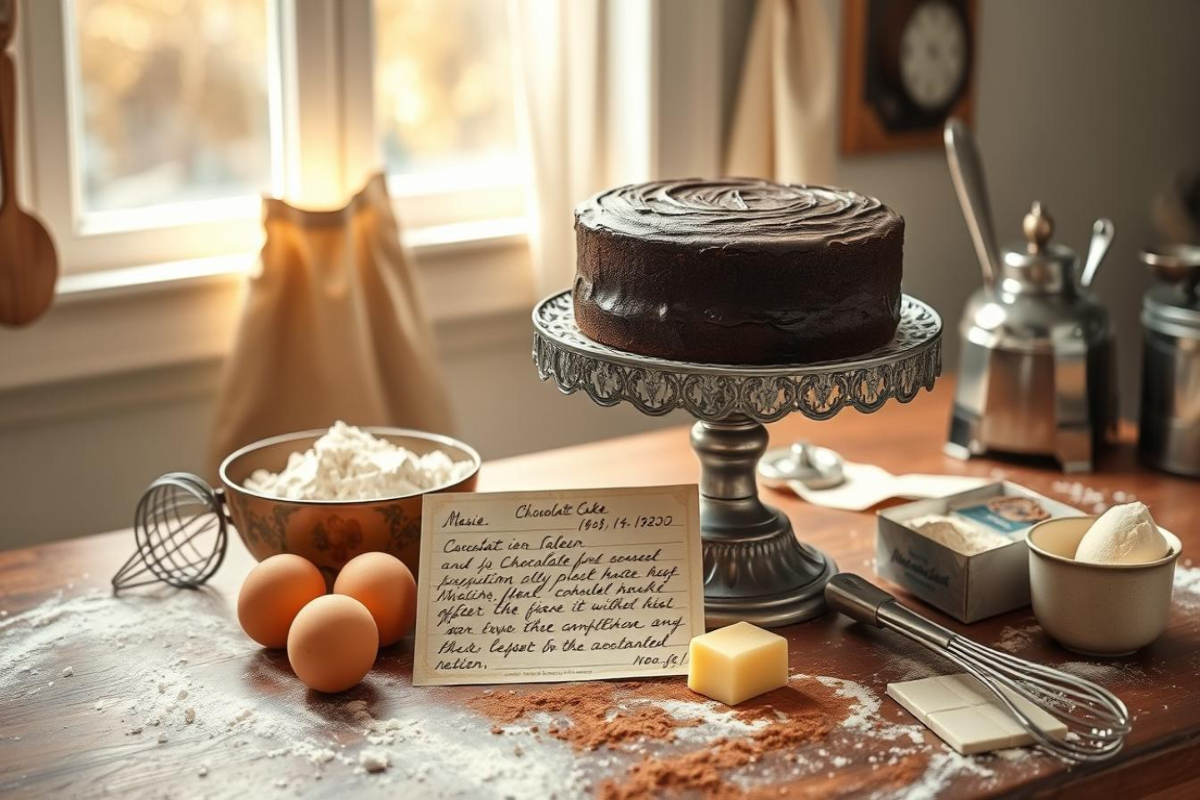
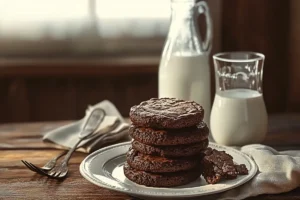
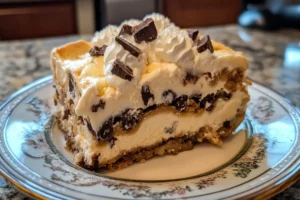
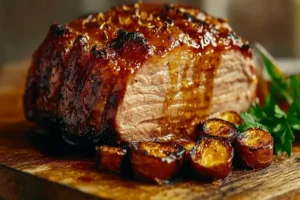
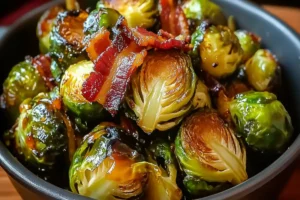

1 thought on “1920’s Recipe for Chocolate Cake: 4 Classic Baking Tips”